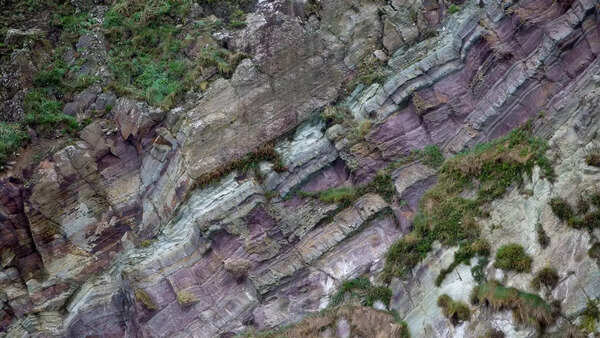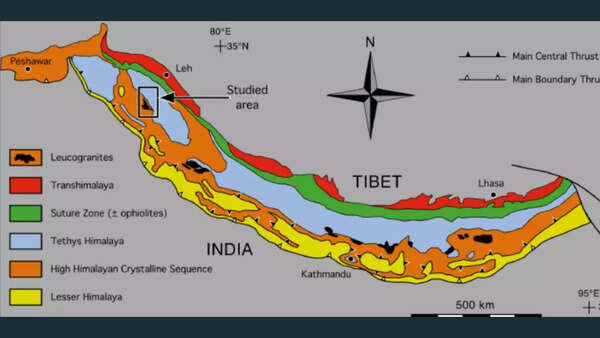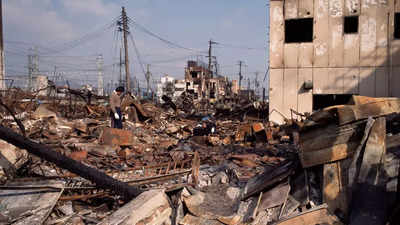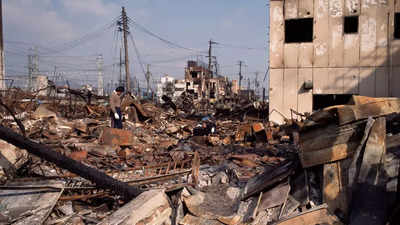Table of Contents
For years, scientists have been warning us about a ticking time bomb buried deep beneath the Himalayas, in the form of a massive earthquake that could rip through northern India and have catastrophic consequences. Scientists call it the “Great Himalayan Earthquake,” and it is expected to reach a magnitude of 8 or higher and what is frightening to know that researchers say that this is not a speculation but a certainty.
“India slides 2 metres beneath the southern edge of Tibet every century,” explained Roger Bilham, a leading American geophysicist, in an interview with The Times of India. “Unfortunately, its northern edge does not slide smoothly but is hung-up (by friction) for hundreds of years and catches up in minutes when this friction is overcome. The slip events, which we call earthquakes, are the inevitable and unavoidable consequence of this motion.”
Historically, earthquakes of this scale have occurred every few hundred years. But it’s now been over 70 years since a big one has happened that is enough to release the immense tectonic pressure that has hit the Himalayan arc. As Bilham says , “They must occur. It is not a matter of ‘possibly’.” with thi scome a terror for millions living near or on the top of major fault lines to which India’s vulnerable for Earthquakes.
Poll
Do you believe India is adequately prepared for a major earthquake in the Himalayan region?

Is the Myanmar Earthquake related to this?
On March 28, a devastating 7.7-magnitude earthquake struck Myanmar, killing at least 2,719 people and injuring more than 4,500. Seventeen more died in the neighbouring country, Thailand. The quake, triggered by a strike-slip fault along the Sagaing Line, released energy comparable to 300 atomic bombs. Bridges collapsed, buildings crumbled, and entire families were buried alive.

A person goes through rubble at a Buddhist monastery building that has collapsed following an earthquake in Naypyitaw, Myanmar Sunday, March 30, 2025. (AP Photo/Aung Shine Oo)
This catastrophe should shake India awake as nearly 59% of India is vulnerable to seismic activity. States like Himachal Pradesh, Uttarakhand, Bihar, and all of Northeast India lie in high-risk zones. Major cities like Delhi, Kolkata, Mumbai, also sit on dangerous fault lines. For example, Delhi, lies in Seismic Zone IV, right above the Delhi-Haridwar Ridge and recently a 4.0-magnitude tremor left the capital shaken, whose epicentre was located in Dhaula Kuan area of Delhi.
The next earthquake can be more intense than the Nepal 2015 earthquake
As per a report by The Times of India, around three-quarters of the 2,000-km-long Himalayan arc is vulnerable for an earthquake of magnitude 8.2, which would release three times the energy of the 2015 Nepal earthquake that stood at a magnitude of 7.8. Some segments can even generate a magnitude 8.7 quake, releasing eight times more energy than Nepal’s disaster.
There’s also a low-probability but possible scenario of a magnitude 9 earthquake, similar to one that may have struck medieval India 800–900 years ago.
While the overall shaking intensity might not surpass what was felt during the Nepal earthquake, the duration of shaking could last up to five minutes, posing a severe threat to the region’s structurally weak buildings.
What needs to change?
Unlike India, countries like Japan and Chile are also prone to large quakes but they have learned how to live with seismic risk. They have brought into force strict construction norms, train communities, and run regular drills. Their cities aren’t immune, but they’re far better prepared.
India doesn’t suffer from a lack of knowledge, but it suffers from a lack of implementation. The Bureau of Indian Standards (BIS) has laid out earthquake-resilient construction codes, “but they’re often disregarded.” Builders who ignore these regulations must face strict legal consequences to ensure accountability.

Conducting regular structural audits is necessary. There has been some positive movement cities like NOIDA have tied up with top institutions—like IIT-Kanpur, BITS Pilani, and CBRI Roorkee for professional audits However, the country still faces a serious shortage of trained professionals who can carry out these checks.
To bridge this gap, universities, technical institutes, and NGOs need to step in. By launching certification programmes and mentorships, we can create a new generation of seismic safety professionals.
As Bilham warned, “A future great Himalayan earthquake (with magnitude between 8.2 and 8.9) will… be unprecedented because the Himalayas are the only place in the world where such a large earthquake can occur on land, exposing about 300 million people to prolonged violent shaking.”
To avoid catastrophic losses, we must act ‘before’ the quake strikes and not after that. That means retrofitting old buildings, training safety auditors, and holding builders accountable. It means adding emergency evacuation zones in cities, conducting school drills, and making earthquake safety part of everyday life.
The next big quake is inevitable. But mass death and destruction are not. We still have time to prepare, only if we choose to use it.


